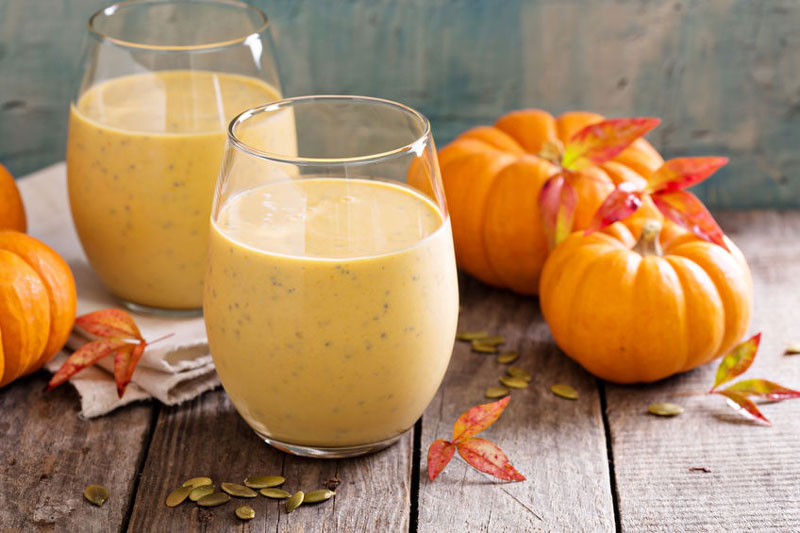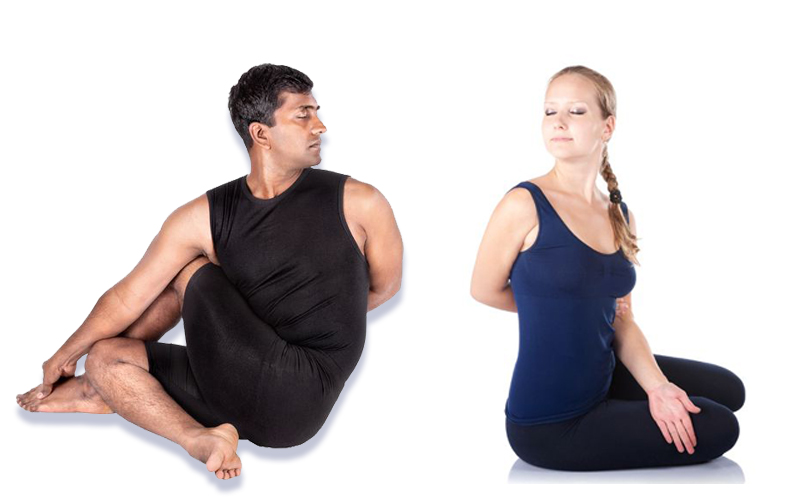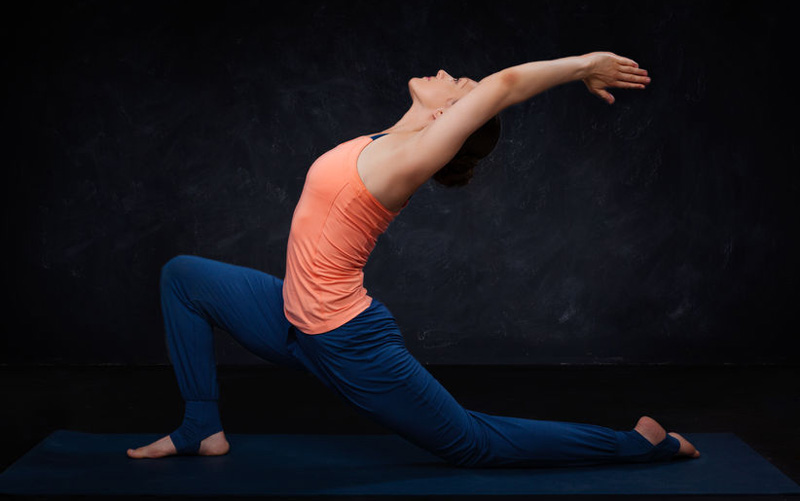October 2017 NewsBlast | Article 2
24 Oct 2017 / NAFCNAFC NewsBlast - October 2017 | Ed 2
3 Ways to Get Pumped About Pumpkin
Written by: Tammy LeBoss, The FitPro Foodie
Source: NAFC Nutrition Coach, The 3-Season Diet by John Douillard
 Copyright: fahrwasser / 123RF Stock Photo
Copyright: fahrwasser / 123RF Stock Photo
- Ann’s Gluten Free Pumped About Pumpkin Pancakes
- On-the-Go Pumpkin Smoothie
- Packed with Power Pumpkin Juice
All of a sudden, summer collapsed into fall bringing with it comfort food cravings. Cravings tell us that our bodies need balancing, and need not be ignored. Instead of reaching for sweet treats and candies, aim to control insulin levels instead. Get pumped about fighting inflammation, improve your immune system, and satisfy those cravings at the same time—using the power of pumpkin.
Did you know that pumpkin is actually a superfood fruit? Consuming pumpkin when in season offers many health benefits. To get you pumped about eating more pumpkin try our top 3 recipes. Also, check out these fun facts about pumpkin:
- High in anti-oxidants which helps in promoting joint health, organ health, stress relief and soft tissue injuries.
- Contain over 200% of the recommended daily intake of vitamin A, which can help protect the eyes from cataracts and degeneration and improve night vision.
- Contain 11 mg of Vitamin C per cup, giving your immune system an extra boost.
- Contain 3 grams of fiber per cup, aiding digestions which can help promote weight loss.
- Rich in beta-carotene, an important antioxidant that neutralizes free radicals which can promote healthy skin, prevent premature aging and cardiovascular disease.
- Pumpkin seeds are high in protein and plant-based fatty acids, which can help regulate cholesterol levels, protect against arthritis and improve brain function.
- The pulp and the seeds are rich in magnesium required for bone and tooth health.
- High in potassium and zinc which help to prevent the onset of cardiovascular disease and hypertension. Zinc also supports the immune system, skin and fertility.
- Contain L-tryptophan, a chemical compound that can promote a sense of well-being.
- Contain 564 mg of potassium per cup (banana has 422 mg/cup), making it a perfect post-workout recovery food.
Ann's Gluten-Free Pumped about Pumpkin Pancakes
Get in the mood for comfort food. It’s cold, rainy and blustery outside. It’s your day off from work and you’ve cozied up in your jammies, holding a toasty cup-of-joe, cuddling with your favorite canines. What could make this moment more perfect? Annie’s gluten-free pumped about pumpkin pancakes! Give this guilt-free, gut-friendly comfort food recipe a try.
Start by grinding the first ingredient in a food processor. Once ground, combine it to the second ingredient on the list, almond flour. You may also grind up raw pumpkin seeds in a food processor and make a flour out of it as a substitute it for the almond flour. Combine all the following ingredients:
- 1/2 cup Trader Joe's gluten-free oats
- 1/4 cup Trader Joe's almond meal
- 1/2 tsp baking powder
- 1/2 cup unsweetened almond milk
- 2 heaping tbs organic canned pumpkin
- 1 large egg
- 1 tbs raw honey (add another teaspoon if prefer sweeter)
- 1 tsp walnut oil
- 1/4 tbs vanilla extract
- 1/8 tsp almond extract
- 1/8- 1/4 tsp Himalayan pink salt to taste
- Chopped walnuts or pecans (optional)
- Wisk everything together with an electric mixer. Heat skillet on medium heat. Lightly butter skillet and slowly pour mix into skillet. Turn pancake when edges are slightly browned and bubbles form. For an extra boost of healthy Omega-3’s, top with a handful of toasted pumpkin seeds which will add a crunchy texture to each bite. Be sure to savor every bite and every comfy, cozy moment!
On-the-Go Pumpkin Smoothie
Get even more pumped about pumpkin seeds which are high in protein, zinc, b-vitamins, complete E, magnesium, phosphorus, manganese, phytosterols, Vita A, C, and potassium. It’s easy to include pumpkin seeds in savory dishes, salads and smoothies. For example, try this quick and delicious smoothie recipe as an ‘on-the-go’ breakfast or as a post-workout treat. Simply blend in a blender a couple of dates, toasted coconut, 1/2 banana, pumpkin seeds and unsweetened almond milk, and voila- you’ve got a healthy meal replacement on the go!
Packed with Power Pumpkin Juice
According to nutritional doctors such as Dr. John Douillard, eating fruits and veggies that are in season such as pumpkin (during the fall season), we’re optimizing on its nutritional value. Bright and easy to absorb, pumpkin juice is a nutrient-dense food. When properly extracted it can serve as a powerful anti-oxidant rich ‘fuel’ for our bodies. Here’s all the ingredients you’ll need for a packed with power pumpkin juice:
- 1 raw pumpkin (get the freshest and buy local)
- 1 raw coconut (use a spoon to scoop out meaty goodness)
- 1/2 cinnamon stick (aids in digestion)
- 1 vanilla bean (extract the seeds)
Cut up pumpkin and coconut and extract juices with a slow juicer. If a slower juicer is not available, use a blender and strain accordingly. Add cinnamon stick and vanilla bean seeds. This recipe may be more labor-intensive than others, but it’s worth it! Give it a try and know that you’re doing your body good. ☺
Written by: Tammy LeBoss, The FitPro Foodie
October 2017 NewsBlast | Article 1
01 Oct 2017 / NAFCNAFC NewsBlast - August 2017 | Ed 2
How to Safely Twist in Yoga, Part 1
Written by: Tammy LeBoss, The FitPro Foodie
Sources: NAFC Yoga200™, Bandha Yoga (Dr. Ray Long)
 Copyright: byheaven / 123RF Stock Photo
Copyright: byheaven / 123RF Stock Photo
The Benefits and Strategies of Twisting
“Asana is not a panacea or a cure-all. In fact, if you do it with ego or obsession, you’ll end up causing problems.” —Glenn Black. (NY Times, 2012)
When it comes to twisting in yoga, all too often most people tend to move too quickly into a pose. For many, the goal involves achieving the right shape when it should involve entering the shape safely. Can you recall the last time you attended a yoga class and the teacher cues to ‘go as far as you can’ in a Crescent Twist or a Revolved Triangle? Without considering the muscles involved, we aim for the goal of going ‘too far and too fast’ into the twist.
For many, this could be the reason for their low back pain. According to Dr. Ray Long, a yoga teacher and orthopedic surgeon:
“Many of us are (already) primed for low-back pain in general. For starters, as we age, it’s estimated that a whopping 90 percent of Americans develop degenerative disk disease, a condition in which the intervertebral disks dry out and lose height. This can lead to stiffness and low-back pain, which tend to worsen over time. Then, there’s the fact that somewhere around 40 to 75 percent of the population has some type of asymptomatic (painless) herniated disk. These disk deficiencies limit the spine’s mobility, which can make twisting—a movement that demands both agility and spinal flexibility—potentially more painful.”
However, when done properly, twists have the potential to help our low back feel great. Benefits of twisting also include:
- Opens the spine, chest, and back
- Strengthens and tone abdominal core and back muscles
- May aid in detoxification and digestion
- Increases blood flow and oxygen
- Prepares the body for deeper inversions and backbends
- May help to counteract degenerative disc disease
Prevent low back pain by understanding the anatomy of twists. Cue students to support the action with proper muscular engagement, and apply an understanding of internal and external levers.
Regarding the use of levers, NAFC Yoga200™ Interactive adds,
“There are 2 ways the body twists: Internal leverage- are the muscles of the body that we use to take our body into a specific range of motion. The transverse abs and oblique muscles function as the primary internal levers in a twist. External levers are forces that assist in taking a range of motion deeper, beyond the range of the internal levers. For example, in a chair twist, the external leverage of the arm pressing against the thigh and the hands pressing together generate energy to twist the body deeper into the pose.”
Pro Tips: Instructors can help students fully realize their full range-of-motion using their muscular structure, or internal lever. And then once that is achieved, add depth to the twist using external leverage.
Have fun making the experience a gradual process. For optimal safety, cue them to twist using muscles first and then deepen the twist by using an outside leverage. Also, learn more about proper warm-ups, cool-downs and safe and gentle transitions.
Written by: Tammy LeBoss, The FitPro Foodie
September 2017 NewsBlast | Article 2
20 Sep 2017 / NAFCNAFC NewsBlast - August 2017 | Ed 2
The Best Way to Safely Transition in Yoga
Written by: Tammy LeBoss, The FitPro Foodie
Sources: NAFC Yoga200™ Interactive Manual, The New York Times, and Yoga Alliance.
 Copyright: dimol / 123RF Stock Photo
Copyright: dimol / 123RF Stock Photo
Avoid This Common Mistake
Did you know that September is National Yoga Month? Help us to celebrate this event by spreading the word about NAFC Yoga200™’s mission: Make yoga accessible for all. One way to do this involves removing the frills and bringing people back to what’s really the science of yoga.
The ancient practice of yoga has been misunderstood and misinterpreted by many. The practice of yoga has grown rapidly in the United States and popularity is growing exponentially. A recent study conducted in 2016 by Ipsos Public Affairs on behalf of Yoga Journal, reports an estimated 36.7 million Americans are participating in yoga. This number is a dramatic increase from 20.4 million in 2012. While some ‘gurus’ have touted its wide-ranging benefits, other teachers and health professionals have raised more interesting questions. These questions have to do with increased reports of injury, nerve damage and even stroke. Wonder why? You may learn more in this New York Times article, published in 2012: Article Link
To continue the conversation, we want to highlight the safety and efficacy of yoga. This month, look for more on how to build on safe transitions, the best ways to twist safely, and as a bonus-a quick list of yoga poses to approach with extreme caution when dealing with the general population.
According to NAFC Yoga200™
“Transitions are one of the most common places for injuries to occur, and as such these should be mindfully crafted throughout the full flow of the class. Pose transitions should almost always be taught within the same category of poses with a few exceptions. For example, a transition from Warrior 2 to Triangle pose is safe because the foot positioning and foundation for the poses are the same. Another example involves using a neutrally rotated standing pose to Crescent Twist because they have the same foundation.”
When teaching a balancing pose, it is acceptable to transition from an externally rotated standing pose to a neutrally rotated standing pose as long as the leg and hip in transition are non-weight-bearing. For example, moving from tree pose to warrior 3 is safe, as the standing leg does not change positions. But, moving from Warrior 3 to Half Moon pose, for example, is unsafe, as it puts too much strain on the standing hip and SI joint.
Pro Tips: Avoid transitioning from an externally rotated standing pose to a neutrally rotated standing/balance pose or twist.
Transitioning from Warrior 1 to 2 is another common transition where mistakes are likely to happen. Transitioning from Warrior 1 to Warrior 2 may be taught if the transition is safely instructed with attention to the safety of the front knee and position of the feet. (See NAFC blog post The Way of the Warrior to learn more). Be sure to also check out How to Bend Safely and Effectively by applying gentle transitional poses. Always remember to approach and exit transitions with ‘slow and controlled’ and avoid ‘fast and furious’ movements.
This month, help us to make that change. Make yoga for every ‘body’. The data is there showing us that yoga is flourishing in America. And, so is the demand for well-qualified instructors. To keep up in a thriving yoga industry, yoga teachers must possess a warm and friendly personality, use clear instruction, and be able to express a certain level of knowledgeable, helpfulness and approachability. Apply these skills with a solid understanding of the science of yoga, and you’ve got a winning formula for making yoga accessible for all.
Written by: Tammy LeBoss, The FitPro Foodie
begin ... prev 3 4 5 6 7 8 9 10 11 12 13 14 15

